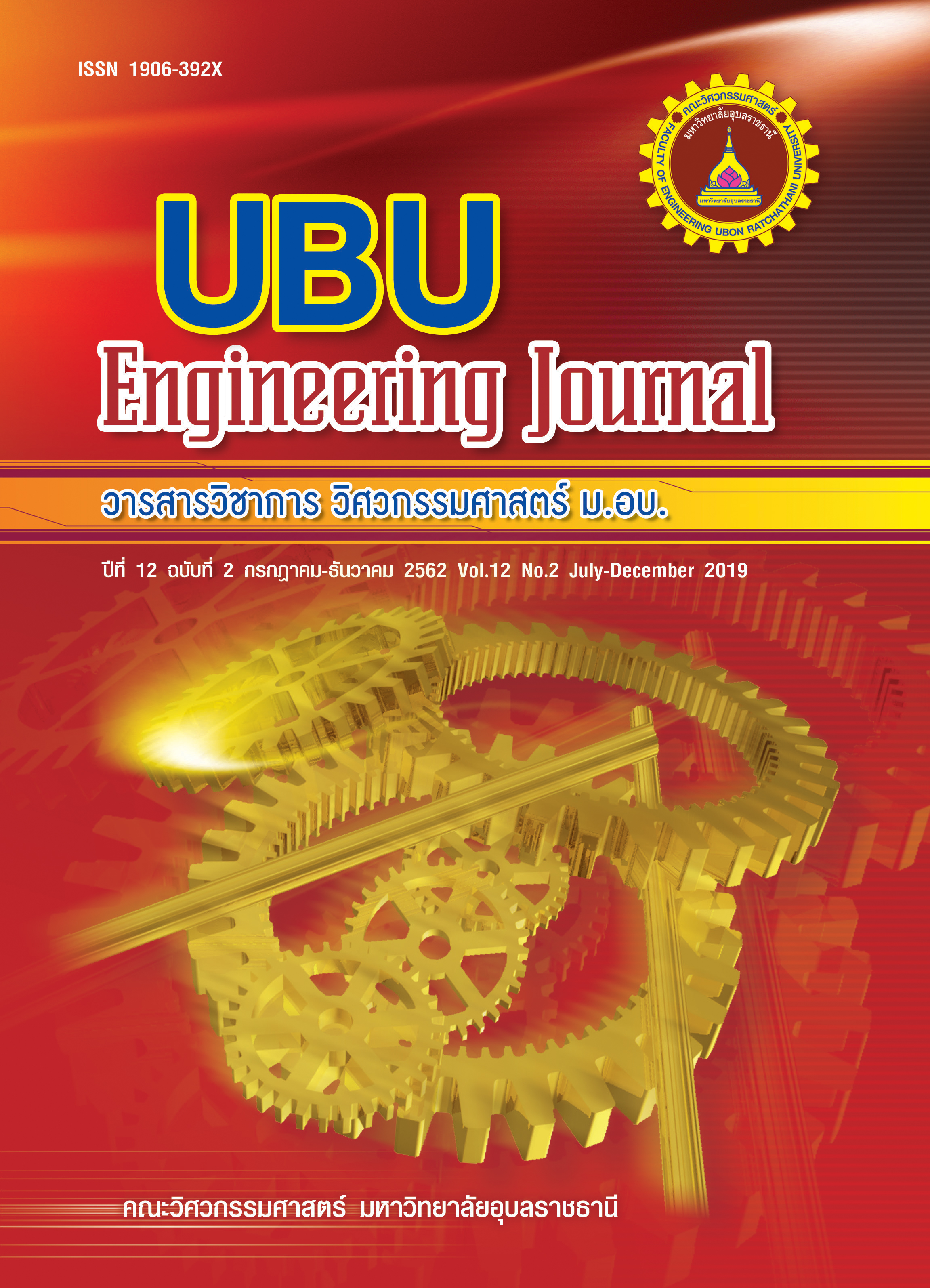การวิเคราะห์โอกาสการเกิดวาบไฟตามผิวของลูกถ้วยก้านตรงขนาด 22kV แบบ 56-2 เมื่อจำลองการทำงานภายใต้สภาวะปนเปื้อนด้วยวิธีไฟไนท์อิลิเมนท์
Main Article Content
Abstract
This paper presents an analysis of the electric field at the surface of pin type insulator model 56-2 which is used in a 22kV distribution system. The simulation is performed based on a mathematical model in the form of a differential equation with three dimension finite element method. In addition, this paper focuses on the electric field comparison on surface insulator under three contaminate conditions such as dusts water drips and sea drips. Moreover, the simulation results to analyze the chance of flash over phenomenon on the surface insulator. The simulation results show that the maximum electric field of 144.18 V/mm occurred while the insulator is under a sea drips contaminated condition and has the most possibility prone to flash over phenomenon. On the other hand, the insulator installed on a water drips contaminated condition has the least possibility prone to flash over.
Keywords: Pin Type Insulator, Flash Over, Finite element method, Contamination
Article Details
References
[2] สำรวย สังข์สะอาด, “วิศวกรรมไฟฟ้าแรงสูง,” กรุงเทพฯ, คณะวิศวกรรมศาสตร์ จุฬาลงกรณ์มหาวิทยาลัย, 2547.
[3] Guatam B. K., M. Ito, Marungsri B., Matsuoka R., Ito S. and Arakawa K. “Contamination Flashover Performances of Hydrophobic Polymer Insulators with Different Core Diameter,” International Conference on Sustainable Development. Toulouse., France, 2004, pp. 5-9.
[4] Marungsri B., Komiya H., Aoyama I., Ishigawa A., and Matsuoka R. “Salt Fog Ageing Test of Silicone Rubber for Outdoor Polymer Insulators,” International Conference on the Properties and Applications of Dielectric Material. Nagoya., Japan, 2003, pp. 1-5.
[5] Dielectric Strength of Insulating Materials [Online].Available:https://www.sciencemadness.org
[6] Boudissa R., Bayadi A. and Baersch R. “Effect of pollution distribution class on insulators flashover under AC voltage” Electric Power System Research. Vol. 104. November 2013. pp. 176-182.
[7] Murugan N., Sharmila G. and Kannayeram G., “Design optimization of high voltage composite insulator using electric field computations,” International conference on circuits power and computing technologies (ICCPCT), 2013. pp. 315-320.
[8] Marungsri B., Onchantuek W., Oonsililai A. and Kulworawanichpong T. “Analysis of electric field and potential distributions along surface of silicone rubber insulators under various contamination conditions using finite element method” World Acad Sci, Eng Technol, vol. 53 no.3. pp. 1353-1363. 2009
[9] Muniiraj C. and Chandrasekar S. “Finite element modelling for electric field and voltage distribution along the polluted polymeric insulator” World Journal Model Simulation, England, UK, Vol. 8 No. 4. 2012, pp. 310-320.
[10] Daniar F., Lucky A.N., Imade Y. N. and Wahyudi R. “Comparative analysis of electric field distribution on glass and ceramic insulator using finite element method” International Seminar on Intelligent Technology and Its Applications (ISITIA). 2016, pp.515-520.

